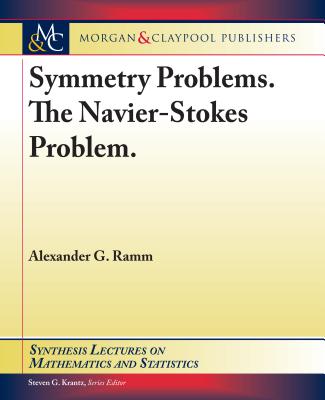Building Probabilistic Graphical Models with Python
暫譯: 使用 Python 建立機率圖模型
Kiran R Karkera
- 出版商: Packt Publishing
- 出版日期: 2014-06-14
- 售價: $1,300
- 貴賓價: 9.5 折 $1,235
- 語言: 英文
- 頁數: 172
- 裝訂: Paperback
- ISBN: 1783289007
- ISBN-13: 9781783289004
-
相關分類:
Python、程式語言
海外代購書籍(需單獨結帳)
相關主題
商品描述
About This Book
- Stretch the limits of machine learning by learning how graphical models provide an insight on particular problems, especially in high dimension areas such as image processing and NLP
- Solve real-world problems using Python libraries to run inferences using graphical models
- A practical, step-by-step guide that introduces readers to representation, inference, and learning using Python libraries best suited to each task
Who This Book Is For
If you are a data scientist who knows about machine learning and want to enhance your knowledge of graphical models, such as Bayes network, in order to use them to solve real-world problems using Python libraries, this book is for you.This book is intended for those who have some Python and machine learning experience, or are exploring the machine learning field.
What You Will Learn
- Create Bayesian networks and make inferences
- Learn the structure of causal Bayesian networks from data
- Gain an insight on algorithms that run inference
- Explore parameter estimation in Bayes nets with PyMC sampling
- Understand the complexity of running inference algorithms in Bayes networks
- Discover why graphical models can trump powerful classifiers in certain problems
In Detail
With the increasing prominence in machine learning and data science applications, probabilistic graphical models are a new tool that machine learning users can use to discover and analyze structures in complex problems. The variety of tools and algorithms under the PGM framework extend to many domains such as natural language processing, speech processing, image processing, and disease diagnosis.
You've probably heard of graphical models before, and you're keen to try out new landscapes in the machine learning area. This book gives you enough background information to get started on graphical models, while keeping the math to a minimum.
商品描述(中文翻譯)
使用在 Python 中實現的機率圖模型解決機器學習問題,並應用於實際案例
本書介紹
- 透過學習圖模型如何提供對特定問題的見解,特別是在高維度領域如影像處理和自然語言處理中,拓展機器學習的極限
- 使用 Python 函式庫解決實際問題,並利用圖模型進行推理
- 一本實用的逐步指南,介紹讀者如何使用最適合每個任務的 Python 函式庫進行表示、推理和學習
本書適合誰閱讀
如果您是一位了解機器學習的資料科學家,並希望增強對圖模型(如貝葉斯網路)的知識,以便使用 Python 函式庫解決實際問題,那麼這本書適合您。本書適合那些擁有一定 Python 和機器學習經驗,或正在探索機器學習領域的人。
您將學到什麼
- 創建貝葉斯網路並進行推理
- 從數據中學習因果貝葉斯網路的結構
- 深入了解運行推理的算法
- 使用 PyMC 取樣探索貝葉斯網路中的參數估計
- 理解在貝葉斯網路中運行推理算法的複雜性
- 發現為何在某些問題中,圖模型能超越強大的分類器
詳細內容
隨著機器學習和資料科學應用的日益重要,機率圖模型成為機器學習使用者用來發現和分析複雜問題結構的新工具。PGM 框架下的各種工具和算法擴展到許多領域,如自然語言處理、語音處理、影像處理和疾病診斷。
您可能聽說過圖模型,並渴望在機器學習領域嘗試新的領域。本書提供了足夠的背景資訊,讓您開始學習圖模型,同時將數學內容保持在最低限度。




























.jpg)


